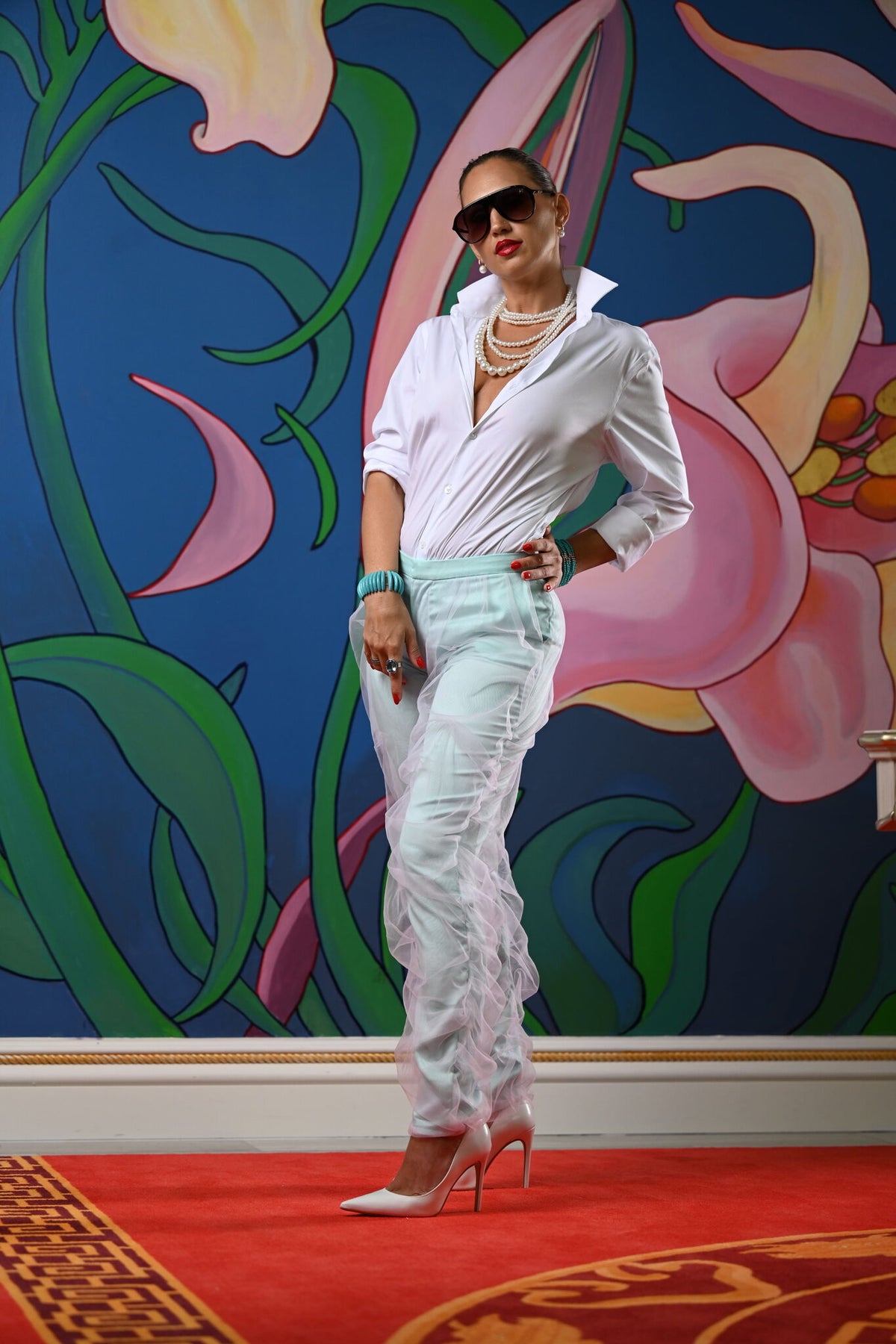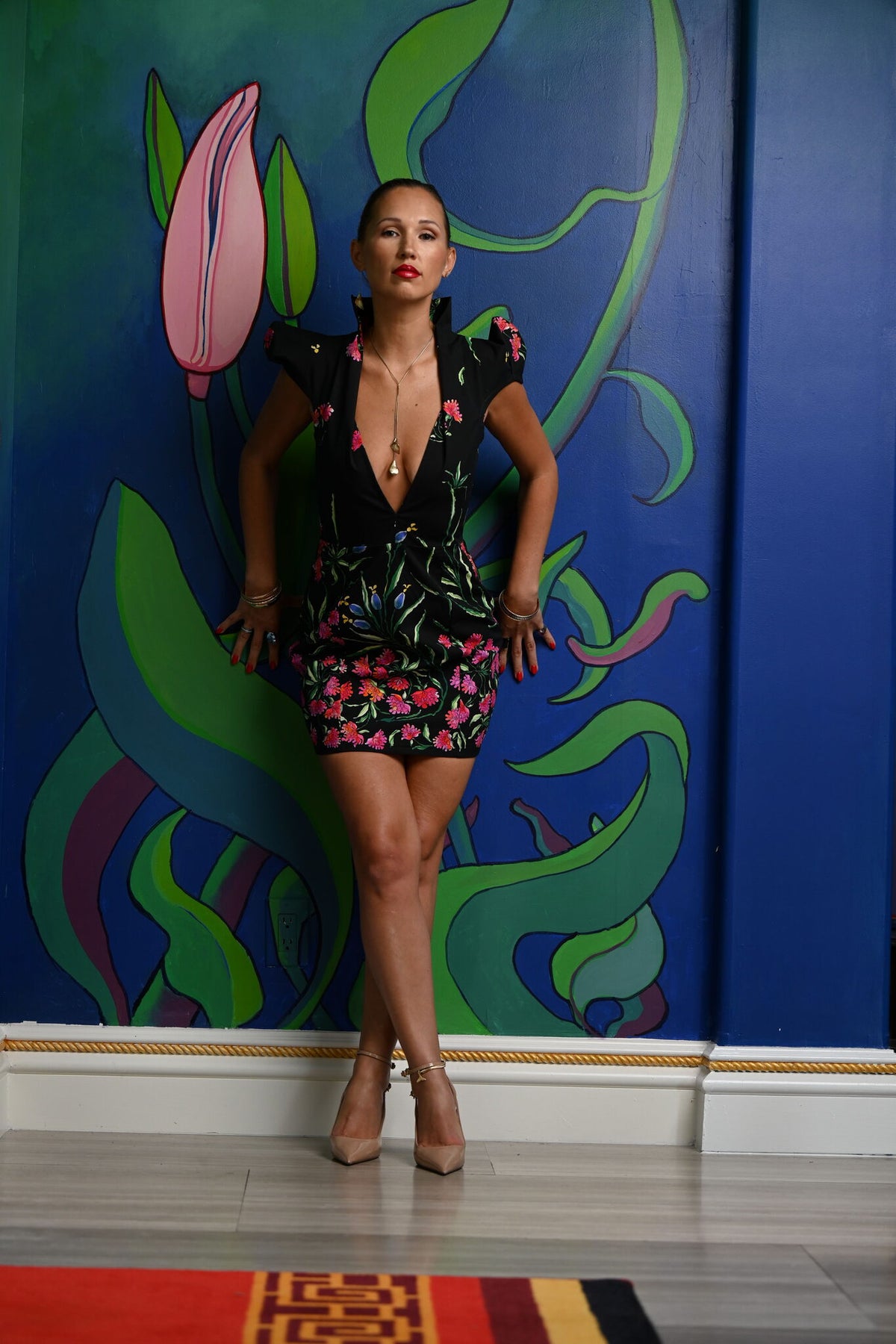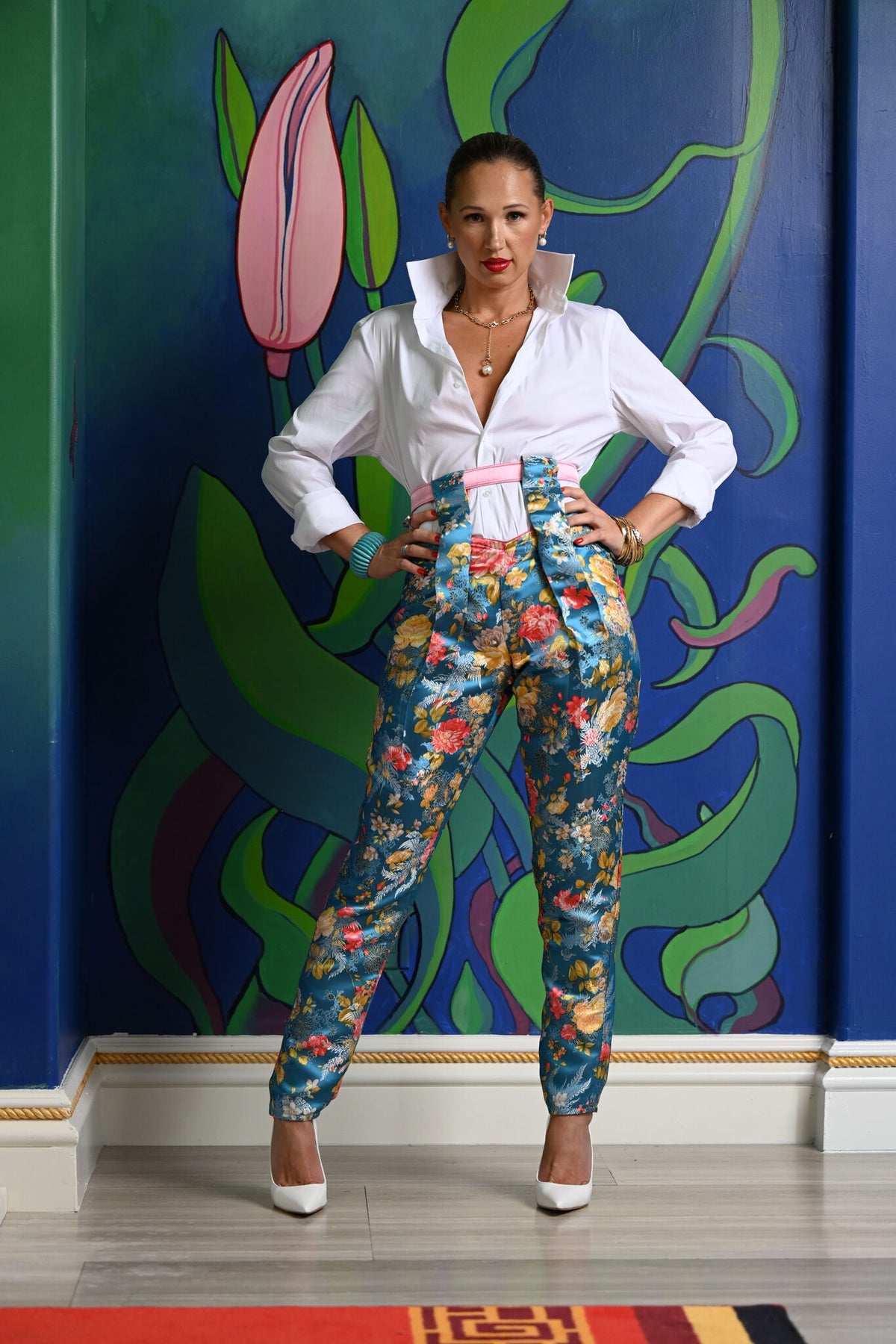Understanding dress codes can often feel like navigating a complex social puzzle, particularly when invitations specify semi-formal attire. This dress code occupies the nuanced space between casual elegance and black-tie formality, creating questions about appropriate choices. Whether preparing for a wedding, corporate event, cocktail party, or evening celebration, knowing how to interpret and execute semi-formal attire ensures confidence and appropriateness for any occasion.
This comprehensive guide explores the definition of semi-formal dress code, clarifies common misconceptions, and provides detailed outfit recommendations that help individuals present themselves with polish and sophistication across various events.
What is semi-formal attire?

Semi-formal attire represents a dress code category that requires a polished, refined appearance without reaching the elevated formality of black tie or white tie events. The term describes clothing that demonstrates sophistication and thoughtfulness while maintaining a degree of personal expression and comfort. Understanding this balance forms the foundation for selecting appropriate garments.
The semi-formal dress code typically applies to evening events, daytime celebrations, professional gatherings, and social occasions where hosts expect guests to demonstrate respect through their appearance. This standard sits above business casual and smart casual designations but does not demand floor-length gowns or tuxedos.
Context plays a significant role in interpreting semi-formal requirements. An evening wedding reception may call for slightly more elevated choices than an afternoon corporate awards ceremony, even when both specify the same dress code. Time of day, venue formality, seasonal considerations, and cultural expectations all influence appropriate selections within the semi-formal framework.
Semi-Formal attire for women

Women have considerable flexibility when dressing for semi-formal occasions, with numerous silhouettes and styles meeting the dress code requirements. The key lies in selecting pieces that project sophistication while remaining appropriate for the specific event context.
Dress options for semi-formal events
Cocktail dresses represent the cornerstone of semi-formal attire for women. These garments typically fall between knee-length and midi length, offering elegant silhouettes without the formality of floor-length evening gowns. A-line, sheath, fit-and-flare, and wrap dress styles all work effectively within this category.
Midi dresses provide an excellent option for those seeking slightly more coverage or a contemporary aesthetic. The hemline that falls mid-calf creates a sophisticated look suitable for various semi-formal occasions. Tea-length dresses, which typically end between mid-calf and ankle, also fit comfortably within semi-formal parameters.
Jumpsuit styles have gained acceptance in semi-formal settings, offering a modern alternative to traditional dresses. Well-tailored jumpsuits in luxurious fabrics with refined details demonstrate appropriate formality when styled correctly. Wide-leg silhouettes in silk, crepe, or structured materials work particularly well.
Fabric and color considerations
Fabric selection significantly impacts the perceived formality of an outfit. Silk, satin, chiffon, lace, velvet, and crepe register as appropriately elegant for semi-formal occasions. These materials drape beautifully and catch light in ways that elevate overall appearance. Cotton, jersey, and casual knits typically read as too informal unless exceptionally well-tailored or embellished.
Color choices depend on event timing and nature. Daytime semi-formal events accommodate lighter hues, pastels, and vibrant colors. Evening occasions traditionally favor deeper tones, jewel colors, metallics, and classic black. Seasonal appropriateness matters as well, with lighter fabrics and colors suiting spring and summer while richer tones complement fall and winter events.
Accessories and styling
Accessories complete semi-formal outfits and provide opportunities for personal expression. Heeled shoes remain standard, whether pumps, strappy sandals, or elegant block heels. Metallic or neutral tones offer versatility, while statement shoes can add personality when the overall ensemble remains refined.
Jewelry should enhance rather than overwhelm the outfit. Statement earrings, delicate necklaces, or elegant bracelets add sophistication. Clutch bags or small structured handbags maintain the polished aesthetic. Wraps, shawls, or tailored blazers provide coverage for cooler environments while maintaining appropriate formality.
Hairstyling and makeup should align with the overall polished presentation. Neat, styled hair and thoughtfully applied makeup contribute to the complete semi-formal appearance.
Semi-formal attire for men

Men's semi-formal attire follows clearer guidelines than some other dress codes, though room for personal style exists within established parameters. The emphasis remains on looking polished and put-together without reaching tuxedo formality.
Suit and jacket guidelines
A well-fitted suit forms the foundation of men's semi-formal attire. Dark colors such as navy, charcoal, and black provide the most versatile and appropriate options. Lighter gray suits work for daytime events, while darker tones suit evening occasions better.
Suit jackets should be properly tailored with appropriate shoulder fit, sleeve length ending at the wrist bone, and overall silhouette that complements body type. Two-button or three-button single-breasted styles represent the most traditional choices, though well-executed double-breasted jackets also work within semi-formal parameters.
Sport coats paired with dress trousers offer an alternative to full suits for certain semi-formal contexts, particularly daytime events or less traditional gatherings. The jacket should coordinate with trousers in a complementary color rather than matching, and both pieces must maintain refined appearance.
Shirt and tie selections
Dress shirts in white or light colors provide the classic foundation for men's semi-formal outfits. Solid colors and subtle patterns work well, while bold prints typically prove too casual. The shirt should fit properly at the collar and cuffs, with adequate torso room without excess fabric.
Neckties remain expected for most semi-formal occasions. Silk ties in solid colors, subtle patterns, or classic designs like repp stripes complement suit choices effectively. The tie width should be proportional to jacket lapels, typically ranging between 2.5 and 3.5 inches. Color coordination with the suit creates a cohesive appearance, though the tie can introduce complementary accent colors.
For less traditional semi-formal settings or warm-weather events, removing the tie may be acceptable, though this decision should consider the specific occasion and venue expectations.
Footwear and finishing touches
Leather dress shoes in black or brown complete the semi-formal look for men. Oxford, derby, and monk strap styles all qualify as appropriate choices. The shoe color should coordinate with the belt, which should also be quality leather. Shoes must be clean and well-maintained, as scuffed or worn footwear undermines the overall polished appearance.
Socks should match trouser color or provide subtle coordination with the overall outfit. Visible skin between trouser hem and sock should be avoided when seated. Dark dress socks represent the safest choice for most semi-formal occasions.
Minimal accessories enhance rather than distract. A quality watch, subtle cufflinks if wearing French cuff shirts, and a pocket square add sophisticated touches without overwhelming the ensemble. Grooming matters significantly, with neat hair and facial hair contributing to the overall refined presentation.
Common semi-formal occasions
Understanding typical events requiring semi-formal attire helps in preparing appropriate wardrobe choices and interpreting the dress code correctly across different contexts.
Weddings and celebrations
Weddings frequently specify semi-formal or cocktail attire, particularly for evening receptions or upscale venues. Guests should consider the ceremony location, time of day, and seasonal factors when selecting outfits. Cultural traditions and regional customs may also influence appropriate choices.
For women, cocktail dresses in colors that complement but do not compete with wedding party attire prove appropriate. Avoiding white, ivory, or colors that might photograph as white shows proper etiquette. Men typically wear dark suits with ties, ensuring their appearance demonstrates respect for the occasion without overshadowing the wedding party.
Engagement parties, milestone birthday celebrations, and anniversary gatherings may also request semi-formal attire, indicating hosts expect a refined appearance that honors the significance of the event.
Corporate and professional events
Evening corporate functions, awards ceremonies, fundraising galas, and company holiday parties often adopt semi-formal dress codes. These occasions call for professional polish with appropriate formality that respects the business context while acknowledging the celebratory nature of the event.
Professional semi-formal attire should lean toward conservative choices in color and style. Women might select knee-length sheath dresses or elegant pantsuits in darker colors. Men should wear well-tailored dark suits with conservative ties. The emphasis remains on looking polished and professional while avoiding anything that might be perceived as too casual or inappropriately revealing.
Social and evening events
Cocktail parties, theater performances, upscale dinner parties, charity events, and evening social gatherings frequently employ semi-formal dress codes. These occasions provide more flexibility for personal style expression while maintaining sophisticated presentation standards.
The venue often provides guidance about appropriate formality levels. A cocktail party at an art gallery or upscale restaurant calls for refined choices, while a private residence gathering might allow slightly more relaxed interpretations within the semi-formal framework.
What to avoid when dressing semi-formal
Understanding what falls outside semi-formal parameters helps prevent inappropriate choices that might cause discomfort or social awkwardness.
Casual fabrics and garments should be avoided entirely. Denim, t-shirts, athletic wear, shorts, and casual sandals never qualify as semi-formal attire regardless of how they are styled. Extremely casual footwear including sneakers, flip-flops, and beach sandals similarly falls well outside appropriate boundaries.
Overly revealing clothing contradicts the refined nature of semi-formal dress codes. Low necklines, very short hemlines, and exposed midriffs prove inappropriate for these occasions. The goal involves looking polished and sophisticated, not provocative or casual.
At the other extreme, formal evening wear exceeds semi-formal requirements. Floor-length gowns and tuxedos typically prove too formal unless the event specifically requests this level of dress. Overdressing can feel as uncomfortable as underdressing, though erring on the side of slightly more formal generally proves safer than appearing too casual.
Excessive embellishment, loud patterns, or costume-like elements detract from the sophisticated aesthetic semi-formal occasions demand. While personal style has a place within dress code parameters, maintaining good taste and appropriateness remains essential.
Seasonal adaptations for semi-formal attire
Adjusting semi-formal choices for different seasons demonstrates awareness and consideration while maintaining appropriate formality levels.
Spring and summer semi-formal dressing
Warmer seasons allow for lighter fabrics, brighter colors, and slightly less structured silhouettes while maintaining appropriate formality. Women can select dresses in lightweight fabrics like silk, chiffon, or lined cotton with floral prints, pastels, or vibrant solid colors. Strappy sandals and open-toe shoes become acceptable, though they should maintain an elegant appearance.
Men might choose lighter-weight suit fabrics such as tropical wool or cotton blends. Lighter colors including tan, beige, and light gray suits work for daytime spring and summer events. Lighter shirt colors and ties in seasonal hues or patterns coordinate well with these choices.
Fall and winter semi-formal options
Cooler seasons call for richer colors, heavier fabrics, and additional layers. Women can incorporate velvet, brocade, or heavier silk fabrics into their semi-formal choices. Deeper jewel tones, burgundy, forest green, and classic black suit the season. Closed-toe shoes become more appropriate, and elegant wraps or evening jackets provide both warmth and style.
Men should select suits in traditional fall and winter fabrics like wool or wool blends. Darker colors dominate appropriate choices. Layering with quality overcoats or topcoats maintains sophisticated appearance when transitioning between outdoor and indoor environments.





